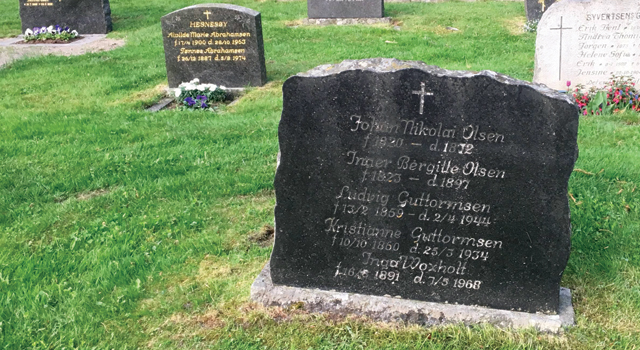TOMBSTONES – DIFFERENT WAYS OF INSTALLATION ACROSS EUROPE

Continuing the topic of differences in the ways of installing tombstones started in the previous issue of Kurier Kamieniarski, in this article let me share my experience from Scandinavia.
We deliver tombstones for various clients to Sweden. Some of them are typical assembly people, others are stonemasons. One can easily tell so when reading the specifications of their orders and the customer’s requirements. Those who assemble usually come up with strict requirements: holes must be drilled, mounting rods prepared (stainless, of course), adhesives supplied, etc. The product must be completely ready for assembly. We usually also make inscriptions and mount photos, prepare accessories such as roses, frames, crosses, etc. Our products are often sent directly to the cemetery, where they are immediately assembled.
Stonemasons only order stone – granite cut and processed according to a precise order. They do the rest themselves.

In Sweden, there are strict rules for installing a tombstone.
Generally, tombstones look similar to our Polish ones. However, they often differ in that, like the Germans, they leave a large part in the cover plate for flowers or other plantings. There are also tombstones in the “American” or “Norwegian” style – an inscription on a pedestal and possibly a small place for a “garden”. In both cases, the diameter of the holes drilled in the granite elements is precisely defined. The rods for assembly must be 1 m long and have a minimum diameter of 12 mm. The bars are anchored in the board, passed through the plinth and mounted to the previously prepared foundation under the plinth. The technology is very durable and solid. Of course, apart from the bars themselves, they also use assembly adhesives.
Norwegians have a completely different opinion on tombstone installation.
The most common form in Norway today is the incineration of bodies. As a result, a tombstone is usually erected within 6 months from the date of the funeral. The funeral ceremony in Norway has a completely different character from that we are used to in Poland. There, the family at the funeral home determines a lot of details related to the entire funeral ceremony – including the number and height of candles lit during the ceremony or the choice of deceased person’s “diary” to be presented to the participants of the funeral ceremony.
Norwegian tombstones tend to be in the “American” style. Most often it is just a simple plate of an appropriate thickness with inscription, a base for the plate and some space for flowers. Such a set makes up the entire tombstone. The thickness of the inscription plate is usually 12 cm. Of course, some cemeteries allow thinner plates, but customers often wish for the accepted standards and demand that the same thickness “as with everyone else” should be kept.
The thickness of the base depends on the height of the text plate. Up to 70 cm high, the base is 12 cm thick. There must be a 15 cm thick base for plates with a height of more than 70 cm. Plates over 100 cm must stand on a 20 cm thick base. With all these enormous – judged by our Polish standards – thicknesses, however, a very poor assembly technique is used.
The plate and the plinth must maintain the appropriate depth of the holes and their appropriate spacing. The bars to be used must be stainless and with a minimum cross-section of 12 mm. Everything sounds good, were it not for the fact that the whole thing is assembled without any foundations, adhesives, mortars, staples etc. Everything is dry mounted. In cemeteries with rocky ground, they are shod under the pedestal and a the tombstone is placed on it. There are many such cemeteries and there is a good chance that the tombstone will not tilt. But there are also many cemeteries where the ground is less stable. On such plots, the ground under the plinth is selected in half its thickness and the plinth is placed in a recess. The board is placed on the pedestal and a plate is added for placement of flowers. All that happens without the use of any specialized, or even home-made, method of permanently connecting these elements. The only connecting points are the stainless rods that are loosely stuck in the openings of the board and the plinth.

Such a tombstone usually tilts after a few months because of workings of the earth. Some customers accept it and look at such a tilted monument until it becomes a safety risk. Only then will they have it corrected. In Norway the service of “lifting” monuments is, no doubt, a considerable source of income for local entrepreneurs dealing with installation of tombstones.
Source: Kurier kamieniarski
